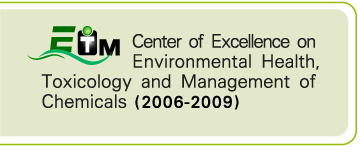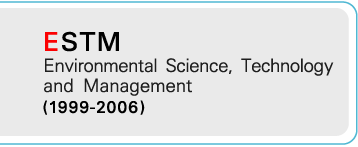| Environmental impact assessment of anthropogenic waste in a human-impacted mangrove, Chonburi Thailand were investigated by using stable isotope of carbon (13C) and nitrogen (15N) technique. Field sampling were performed in June (dry season) and November (wet season) 2014 in mangrove (12 stations) where receives treated wastewater and adjacent mudflat (12 stations). The organic carbon (OC) of surface sediment in both the dry and wet season ranged from 2.7 – 30.2 mg/g with higher values in mangrove than those in mudflat area as same as organic nitrogen (ON) values of surface sediment which ranged from 0.2 – 3.9 mg/g. OC and ON of sediment cores were no significantly vertical change. These results showed that accumulations of organic matter (OM) were high in mangrove sediment and then decreased seaward to the adjacent mudflat. This was consistent with the values of carbon and nitrogen stable isotopes in sediment.
The stable isotopes of carbon in mangrove sediment were ranged from -26.26‰ to -23.24‰ with an average of -24.21±0.79‰. The stable isotope of nitrogen ranged from -3.97‰ to 6.87‰ showing lower values than those in mudflat sediment ranging from -23.63 ‰ to -21.97‰. The stable isotope signatures of sediment between mangrove and mudflat were significantly different (p<0.05). That 13C values of mangrove sediment were closed to those of Chonburi wastewater treatment plant effluent, this indicates OM from effluent input and accumulates in mangrove area. The stable isotope signatures of effluent were closed to isotopic compositions of mangrove crab (Sesarma haematocheir) which showed the 13C ranged from -27.61‰ to -23.92‰ indicating mangrove crab derived OM from effluent. The values of 13C (-24.22‰ to -23.92‰) and 15N (10.16‰ – 10.77‰) of mangrove polycheates (FAM. Nereididae) were higher than those of effluent indicating OM of mangrove polycheates were not derived from effluent. In other hand, 13C of bivalves in mudflat Oyster (Saccostrea commercialis) (-19.62‰ to -19.44‰), Cockle (Anadara granosa) (-19.09‰ to -18.08‰) and Green mussel (Perna viridis) (-18.08‰ to -17.73‰) were higher than those of the 13C of effluent that showed the bivalves did not utilize OM from effluent as food sources. In conclusion, results from this study indicates that anthropogenic OM from effluent accumulated in mangrove and did not input to adjacent mudflat area. Thus, the cultured bivalves in mudflat did not utilized OM from effluent. This also indicates important roles of mangrove serving as a trap for organic and anthropogenic pollutant. They play important role as a place for organic degradation and circulation to achieve sustainable management in marine ecosystem. แหล่งข้อมูล:
|
 Center of Excellence on Environmental Health and Toxicology (EHT)
Center of Excellence on Environmental Health and Toxicology (EHT)










